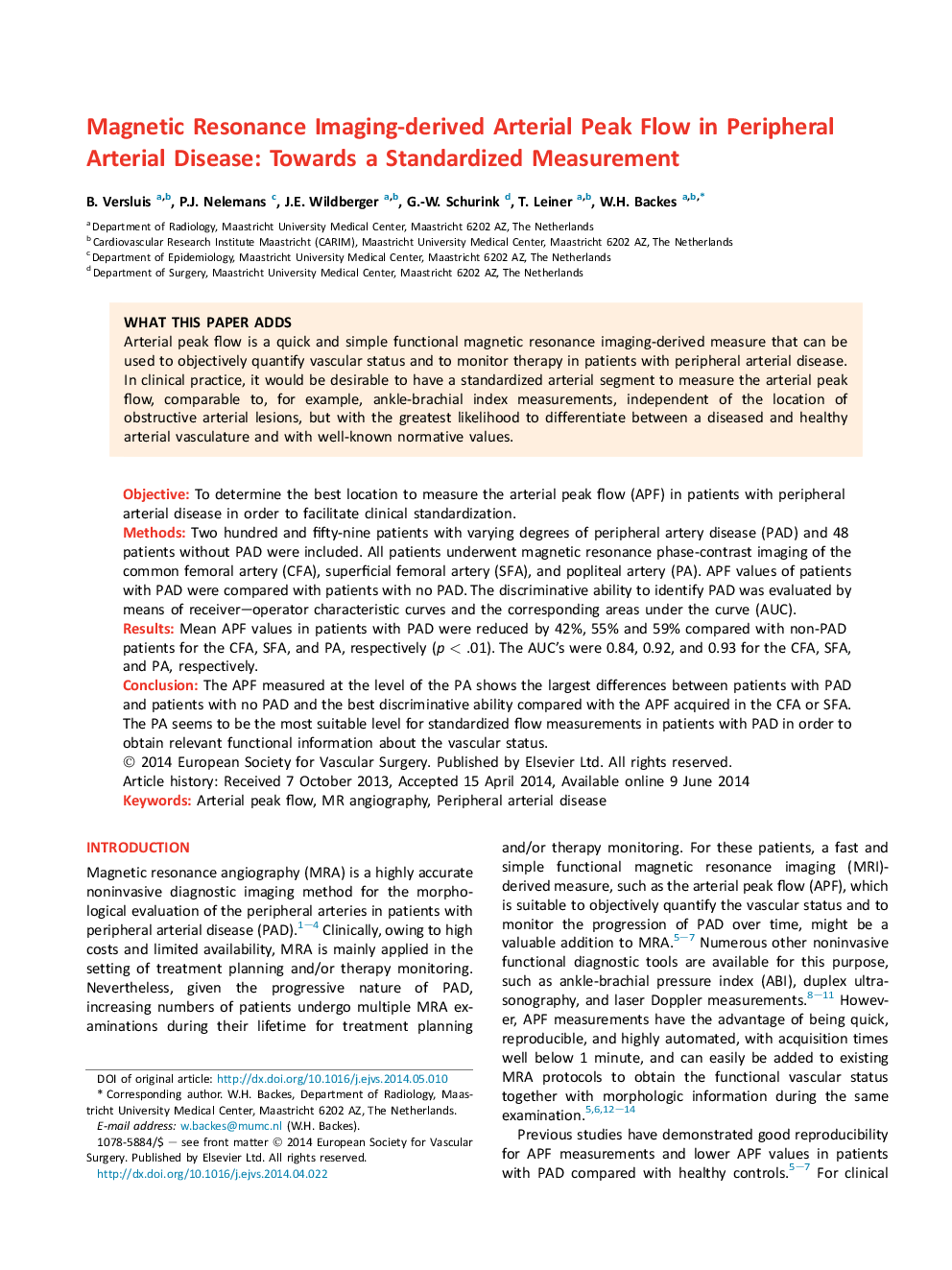| Article ID | Journal | Published Year | Pages | File Type |
|---|---|---|---|---|
| 5958199 | European Journal of Vascular and Endovascular Surgery | 2014 | 8 Pages |
ObjectiveTo determine the best location to measure the arterial peak flow (APF) in patients with peripheral arterial disease in order to facilitate clinical standardization.MethodsTwo hundred and fifty-nine patients with varying degrees of peripheral artery disease (PAD) and 48 patients without PAD were included. All patients underwent magnetic resonance phase-contrast imaging of the common femoral artery (CFA), superficial femoral artery (SFA), and popliteal artery (PA). APF values of patients with PAD were compared with patients with no PAD. The discriminative ability to identify PAD was evaluated by means of receiver-operator characteristic curves and the corresponding areas under the curve (AUC).ResultsMean APF values in patients with PAD were reduced by 42%, 55% and 59% compared with non-PAD patients for the CFA, SFA, and PA, respectively (p < .01). The AUC's were 0.84, 0.92, and 0.93 for the CFA, SFA, and PA, respectively.ConclusionThe APF measured at the level of the PA shows the largest differences between patients with PAD and patients with no PAD and the best discriminative ability compared with the APF acquired in the CFA or SFA. The PA seems to be the most suitable level for standardized flow measurements in patients with PAD in order to obtain relevant functional information about the vascular status.
